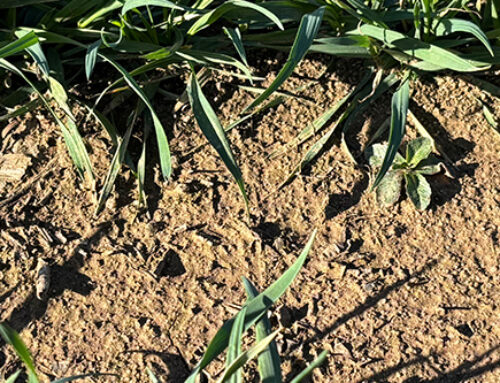You have a sick child at home that has a horrible sickness. You take him to the doctor and get a prescription for treatment. You give your child the medicine and soon enough they return to normal health. A few days later the sickness returns. You go back to the doctor and receive the same medication, but this time it doesn’t even touch your child’s illness. The sickness has mutated and become resistant to the medication. This is exactly what is happening with weeds that are continually treated with similar herbicides year after year in a no-till farming operation.
The era of no till farming may see changes with the findings discovered over the last few years. Currently no-till farming requires significant use of chemicals to keep weed pressure under control. One of the most used chemicals that has been sprayed over the last 30+ years has been glyphosate, commonly known as Roundup. What has been discovered is the overuse of the same herbicides is killing some, but not all weeds. The next time a field is sprayed, more weeds become resistant. Resistant weeds are becoming known by the more popular term “superweeds”. The infestation rate is alarming. Every farm I evaluated this summer had resistant weeds, and I know this is not the only area having problems. I can only imagine how quickly the number of infested fields will rise over the next few years. Farmers run the risk of being completely overrun by resistant weeds. These weeds may soon take over their non-resistant counterparts. If weeds cannot be killed with the popular chemistry available today, farmers will be forced to look at alternative active ingredients, or resort to tilling the ground to get rid of the herbicide resistant weeds. It will be tougher to manage a strictly no-till operation. We may still have minimum till, but not complete no-till. Also, the value of GMO traits, such as the Roundup Ready trait will be compromised if we cannot use glyphosate to control weeds in season.
Farmers were urged to convert to no-till farming to help reduce erosion and conserve soil moisture. We all know the wind blows in Oklahoma as well as the surrounding states. If we can’t fully utilize no-till practices due to herbicide resistant weeds, we may see ourselves looking at another dust bowl era.
Farmers can minimize the occurrence of resistance by following good management practices, including rotating active ingredients and modes of action and utilizing crop rotation. Massive amounts of research are being conducted to find new chemicals with different modes of action to try to stop this problem. This work is expensive. Will we be able to afford new chemistry? On the other hand, will we be able not to afford it? We will find ourselves in the situation where if we do not choose to rotate with different chemicals, our production potential will be greatly reduced due to the infestation of resistant weeds. The concern is real, and requires our attention to keep resistant weeds in check.
Article Written by: Jade Jensen, 2014 Agronomist Intern in Enid, OK Division; Oklahoma State University
Featured Images by: Dr. Dallas Peterson, Kansas State University





